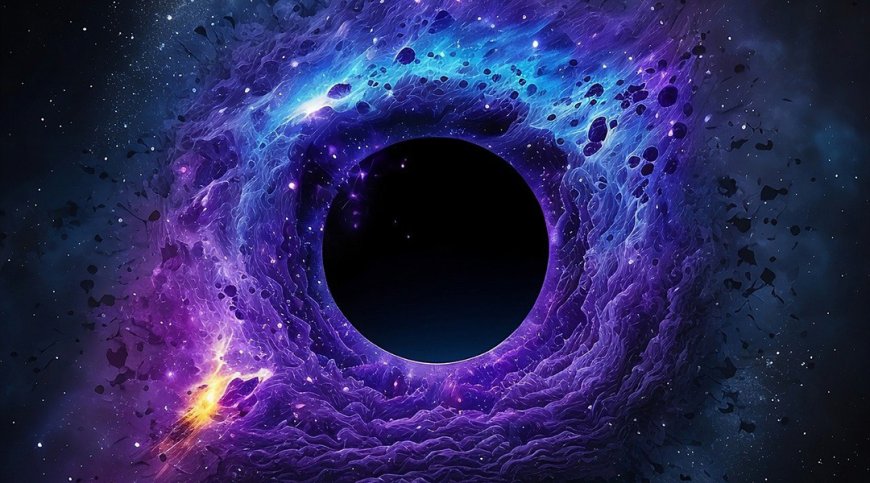Unveiling the Cosmos: The Mystery of Dark Matter and Dark Energy
Explore the mysterious forces of dark matter and dark energy, the invisible components shaping our universe. Discover their role, scientific evidence, and latest research in this detailed guide.

Introduction: The Universe’s Greatest Unseen Forces
For centuries, humanity has looked up at the night sky, trying to understand the vast cosmos. From ancient astronomers mapping the stars to modern scientists unraveling the secrets of the Big Bang, our understanding of the universe has grown exponentially. Yet, despite all our advancements, a staggering 95 percent of the universe remains invisible and unexplained.
This unseen portion is made up of two enigmatic components: dark matter and dark energy. These forces do not emit, absorb, or reflect light, making them impossible to detect with traditional instruments. However, their influence on galaxies, cosmic expansion, and the very structure of space itself suggests that they are among the most fundamental aspects of reality.
In this article, we’ll dive deep into what dark matter and dark energy are, the evidence supporting their existence, and the ongoing scientific efforts to decode their mysteries.
What Is Dark Matter?
Dark matter is an invisible substance that makes up about 27 percent of the universe. It does not interact with electromagnetic radiation, meaning it cannot be seen directly. However, scientists know it exists because of its gravitational effects on galaxies and galaxy clusters.
How Do We Know Dark Matter Exists?
Though we cannot see dark matter, multiple lines of evidence suggest it must be present:
-
Galactic Rotation Curves
- Observations show that stars on the outer edges of galaxies orbit at the same speed as those closer to the center.
- According to Newtonian physics, objects farther from the center of a galaxy should move more slowly, unless an unseen mass is providing additional gravitational pull.
-
Gravitational Lensing
- When light from distant galaxies passes through a massive object (such as a galaxy cluster), it bends due to gravity.
- The observed bending is often far greater than what visible matter alone can account for, suggesting the presence of additional, unseen mass.
-
Cosmic Microwave Background (CMB)
- The CMB, the afterglow of the Big Bang, carries imprints of the universe’s composition.
- Precise measurements from the Planck satellite and WMAP show that normal matter alone cannot explain the gravitational effects seen in the early universe.
What Is Dark Matter Made Of?
The exact nature of dark matter remains one of the biggest mysteries in physics, but scientists have proposed several candidates:
- Weakly Interacting Massive Particles (WIMPs): Hypothetical particles that could interact with normal matter via gravity and the weak nuclear force.
- Axions: Extremely light particles theorized to solve problems in quantum chromodynamics.
- Primordial Black Holes: Some theories suggest that dark matter could be composed of tiny black holes formed in the early universe.
Despite numerous experiments, including those at the Large Hadron Collider (LHC) and underground detectors like XENON1T, no direct detection of dark matter has been made—yet.
What Is Dark Energy?
While dark matter holds galaxies together, dark energy does the opposite—it pushes the universe apart. Making up nearly 68 percent of the universe, dark energy is responsible for the accelerated expansion of space.
How Do We Know Dark Energy Exists?
-
The Expanding Universe
- In 1929, Edwin Hubble discovered that galaxies are moving away from us, proving that the universe is expanding.
- In the 1990s, studies of Type Ia supernovae revealed that this expansion is speeding up, something that shouldn’t be happening under normal physics.
-
Cosmic Microwave Background Measurements
- Observations from satellites like Planck and WMAP indicate that the universe is flat, meaning there is a missing component providing energy to account for this balance.
- This missing component is what scientists call dark energy.
-
Large-Scale Structure of the Universe
- Surveys of galaxies over billions of years show that dark energy is affecting the way galaxies form and cluster together.
What Could Dark Energy Be?
Scientists are still debating the true nature of dark energy, but some leading theories include:
- The Cosmological Constant (Λ): Proposed by Einstein, this idea suggests that empty space has its own energy, causing an outward force.
- Quintessence: A dynamic, evolving energy field that changes over time.
- Modified Gravity Theories: Some physicists believe our understanding of gravity itself might need revision to explain the accelerating universe.
How Do Dark Matter and Dark Energy Shape the Universe?
Both dark matter and dark energy play critical roles in shaping the cosmos:
- Dark Matter: Acts as the scaffolding of the universe, providing the gravitational framework upon which galaxies and galaxy clusters form.
- Dark Energy: Works against gravity, pushing galaxies apart and driving cosmic acceleration.
If dark matter did not exist, galaxies would not have enough mass to remain stable and would fly apart. Without dark energy, the universe’s expansion might have slowed or even collapsed under gravity’s pull.
Current Research and Future Discoveries
Despite being unseen, scientists are actively searching for dark matter and dark energy using cutting-edge technology:
- Particle Colliders – The Large Hadron Collider (LHC) is looking for new particles that could be linked to dark matter.
- Space Observations – The James Webb Space Telescope (JWST) and upcoming Euclid Space Telescope aim to analyze the large-scale structure of the universe.
- Dark Matter Detectors – Deep underground experiments such as XENONnT and LUX-ZEPLIN are searching for rare interactions between dark matter and normal atoms.
As new discoveries emerge, we may soon have a clearer picture of the true nature of the invisible universe.
Conclusion: The Ultimate Cosmic Puzzle
Dark matter and dark energy are two of the most profound mysteries in modern physics. While dark matter acts as the universe’s invisible glue, holding galaxies together, dark energy is the repulsive force driving expansion. Together, they make up 95 percent of everything—yet remain largely undetectable.
Unraveling these mysteries could redefine our understanding of physics, gravity, and the very nature of existence itself. The search for answers continues, and with each new experiment, we inch closer to revealing the universe’s deepest secrets.
Will dark matter and dark energy ever be directly observed? Or are they just the shadows of a deeper, unknown reality? The quest for answers is far from over.
What's Your Reaction?
 Like
0
Like
0
 Dislike
0
Dislike
0
 Love
0
Love
0
 Funny
0
Funny
0
 Angry
0
Angry
0
 Sad
0
Sad
0
 Wow
0
Wow
0



















































